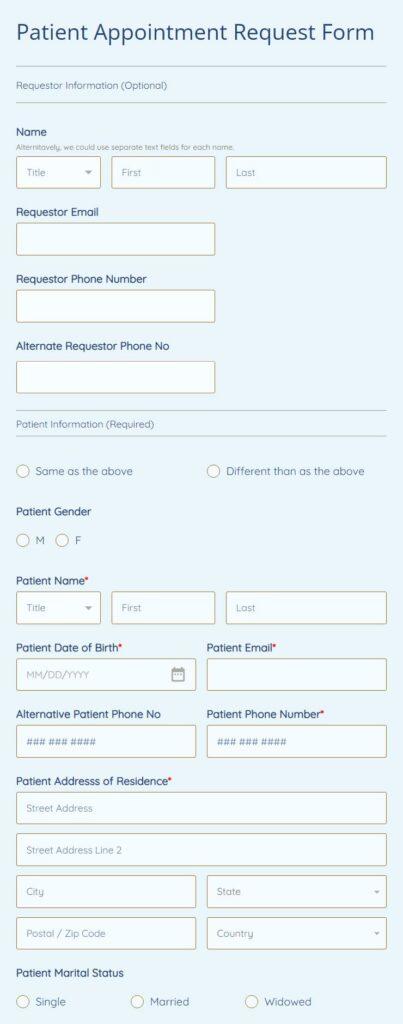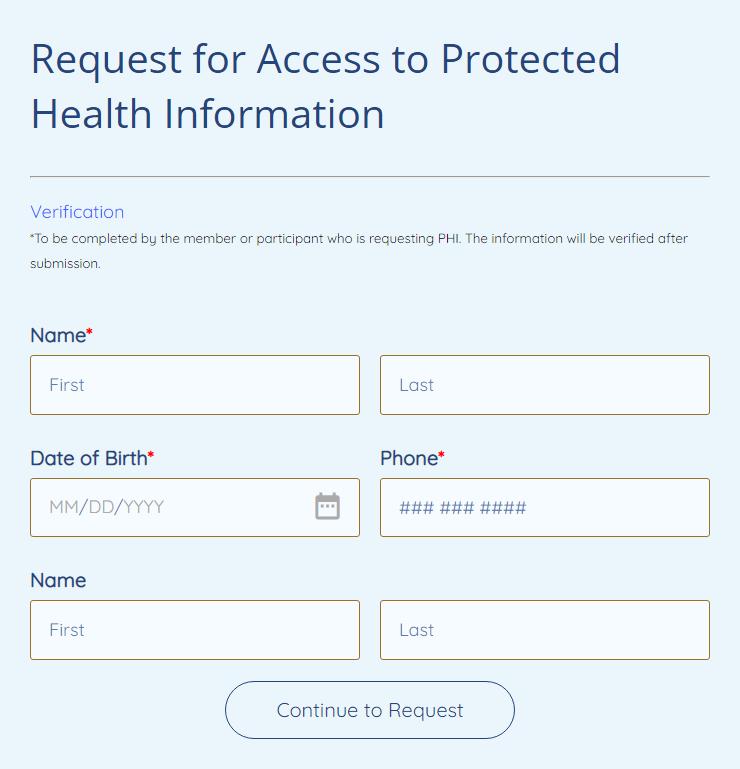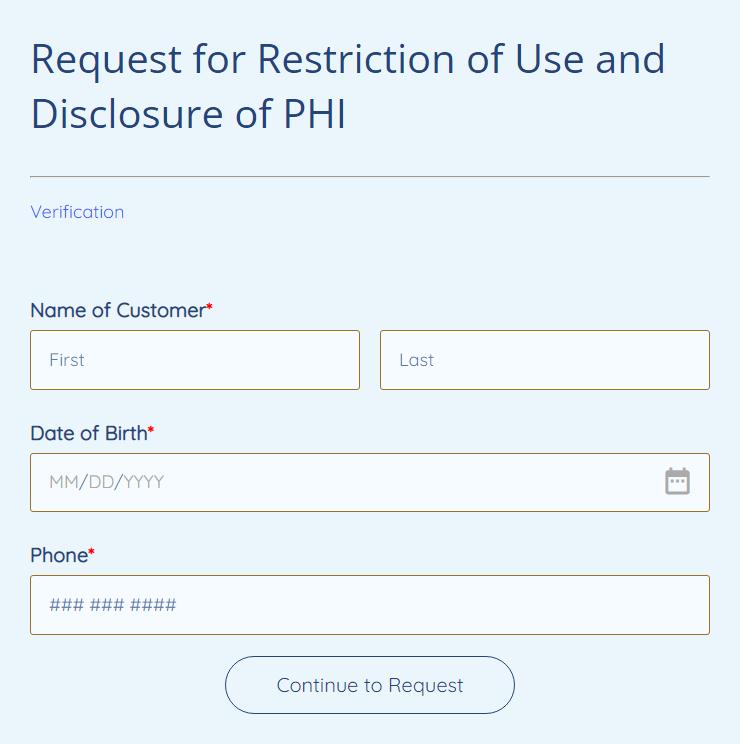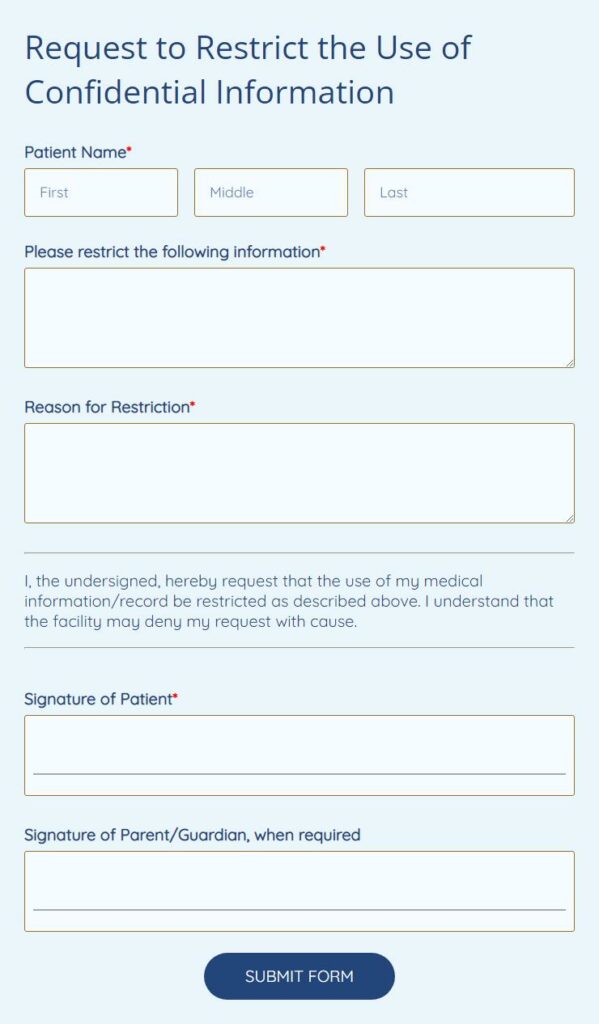
There’s nothing worse than slowing down medical procedures unnecessarily.
Lengthy processes and confusing paperwork slow your practice down and do nothing to help improve the patient experience. That’s why you need comprehensive and easy-to-use forms for patients, doctors, and all interested parties.
With 123FormBuilder you’ll be able to create the medical request forms you need for your practice. Whether the patient is relocating, wants to change doctors, or needs access to confidential health records—you’ll be able to support patients in getting the healthcare they need.
In order to facilitate the process of getting this important information, it’s essential to have the right medical request forms on hand.
Using our intuitive, secure form builder helps ensure you’re able to include all the necessary information in your forms.

Who needs this?
Any patient that has various requests related to medical providers, medical facilities, physicians, specialists, or medical services will need this authorization request.
What’s it for?
An authorization request form helps identify patients and their healthcare providers, as well as communicate the patient’s requests. It’s a key step in transferring a patient from one healthcare professional to another under a health insurance plan.
Key benefits:

Who needs this?
Drug prior authorization request forms are used by doctors and healthcare providers that wish to request insurance coverage for drugs that are not listed on the insurance or state’s preferred drug list (PDL).
What’s it for?
This form explains why the drug is needed so the insurance can approve its administration and use. Any information about prior treatment with a different drug provided by the insurance should also be explained to further the rationale for the requested drug and treatment course.
Key benefits:

Who needs this?
Patients, travelers, and guardians use these immunization information release requests to obtain their whole vaccination records to provide to daycare centers, schools, and other institutions.
What’s it for?
The immunization record request is used to request confidential details on an individual’s vaccination status. It includes details on the individual, as well as details on the requestor.
Key benefits:

Who needs this?
Doctors, physicians, and healthcare providers will use laboratory test request forms when they need a test to be performed by a laboratory.
What’s it for?
A laboratory test request is a form used by healthcare providers to ask for laboratory testing. It establishes the type of tests they need, the sample quantity that’s been provided, and all the details of the company or healthcare provider requesting the test.
Key benefits:

Who needs this?
If a patient is changing doctors, moving to a new location, transferring to a different hospital or nursing home, or if they need their records to be sent to a specialist—they’ll need a medical record transfer request. This medical release form allows their records to be moved according to the law.
What’s it for?
The request form–also known as the medical records release form, or authorization to release medical records–is a document that authorizes a patient’s records to be transferred from one health care provider to another.
Key benefits:

Who needs this?
This is a key form for any doctor, nurse, or healthcare practitioner that needs to request medical records from a medical institution.
What’s it for?
This form helps identify the patient and the requestor, as well as the medical records needed. It also includes a section with legal information about the records requested.
Key benefits:

Who needs this?
The pathology request form is needed by healthcare providers to request pathology services for a patient.
What’s it for?
This form gathers the physician and patient details, as well as the pathology tests that are needed and the reasoning behind their request.
Key benefits:

Who needs this?
A patient appointment request is a form used by patients to request an appointment for a consultation at a specific medical center.
What’s it for?
Patients use this form to request an appointment with a healthcare provider. The form makes space for patients to include their personal details, reasons for appointment request, and availability—alongside some other key details.
Key benefits:

Who needs this?
A patient revocation request is a form given to patients that wish to revoke, modify, or deny access to any of their protected health information (PHI).
What’s it for?
With this request form, patients can clearly state why they want to update the access and use of their PHI by other members covered under their policy. They can also specify any other changes to their privacy and confidential communication preferences.
Key benefits:

Who needs this?
Individuals that need to appoint someone else as a personal representative will need to fill this request. Patients use this form to enable someone to act on their behalf when they’re unable to when it comes to health benefits, protected health information, and so on.
What’s it for?
This form enables a patient to state who they are appointing as their personal representative and what powers they will have.
Key benefits:

Who needs this?
Patients who need a repeat prescription will require this prescription refill request form. It allows patients to request the medication they need without leaving the comfort of their own homes.
What’s it for?
This form enables patients to request that their repeat medication be sent to their doctor’s office or home address. The form includes patient details, medication details and dosage, and delivery preferences.
Key benefits:

Who needs this?
A referral request form is filled out by a doctor, nurse, or other healthcare provider who needs to refer a patient to a specialist doctor.
What’s it for?
This request gives the information of who is being referred, to whom, and under what reasons or circumstances—when specialized care is needed, for example. It also provides relevant medical information.
Key benefits:
 routine medical appointment" width="740" height="762" />
routine medical appointment" width="740" height="762" />
Who needs this?
Patients that want to book a routine medical appointment require this form to communicate their needs.
What’s it for?
This form enables patients to request a routine medical appointment with their GP. This form gives the medical practice all the information to find a time that works for both the physician and the patient.
Key benefits:

Who needs this?
This is a key form for any individual that requires access to their protected health information (PHI).
What’s it for?
This form is used to request any piece of protected health information. Patients state what information they want access to, sign in agreement to the terms and conditions, and await notice from their practice.
Key benefits:

Who needs this?
Patients use this form to request details on the use of their personal health information over a period of time.
What’s it for?
The request for accounting form enables patients to get an understanding of when and how their personal health information has been used. It details when PHI has been disclosed outside of for treatment, payment, or healthcare operations.
Key benefits:

Who needs this?
This is an essential form for medical practices to have on hand for patient use.
What’s it for?
This form establishes permissions for communicating confidential and highly sensible information. It also establishes verification questions in order to increase the security of the communications.
Key benefits:

Who needs this?
Health insurance providers and their clients—your patients—need this form following a diagnosis or treatment at a medical facility.
The International Classification of Diseases assigns diagnosis codes, which describe an individual’s disease or medical condition. These codes are used on hospital and insurance forms.
What’s it for?
The request for diagnosis and treatment code information form is needed to facilitate billing following a medical procedure. It’s used to request the specific diagnosis and treatment codes that are relevant for billing a patient’s health insurance provider.
Key benefits:

Who needs this?
Patients that want to restrict the use and disclosure of their protected health information will need to fill in this form.
What’s it for?
This request is needed to establish the desired restrictions on a patient’s protected health information. This form helps keep a well-structured record of the restrictions requested to ensure that medical practices are able to fulfill their legal patient confidentiality obligations.
Key benefits:

Who needs this?
A dental patient will need this form in order to book a routine dental appointment. It’s a key form for dental practices.
What’s it for?
This appointment request form allows patients to take charge of their dental care with a routine check-up with their dentist. This form enables them to request a time that works, and outline what they expect from the appointment.
Key benefits:

Who needs this?
Patients that would like to make an amendment to their protected health information (PHI) will need to fill in this form.
What’s it for?
The request to amend protected health information form enables patients to communicate desired changes to their PHI record. Whether they need a change to be done on the PHI due to an error, or simply to update information, the request to amend protected health information is key for ensuring complete transparency.
Key benefits:

Who needs this?
This form is essential for patients who want a copy of their clinical records and test results to inspect.
What’s it for?
The request to inspect a copy of a clinical record enables patients to request a copy of their medical records for inspection.
Key benefits

Who needs this?
Patients might need to obtain a copy of their clinical records when starting at a new school, dealing with insurance issues, receiving follow-up patient care, or for any other reasons. The request to obtain a copy of the clinical record lets them ask for exactly what they need.
What’s it for?
The request to obtain a copy of clinical records is needed in order to legally release confidential information. This includes things like expiration date of authorizations, description of sensitive information to be disclosed, and agreed format for the disclosure (physical copy, digital copy, delivered to a specific address, etc).
Key benefits:

Who needs this?
Patients use this form to request that their confidential information be restricted. If a patient would like to restrict the use of any of their confidential information they will need to request this and specify the reasons as to why.
What’s it for?
This form enables patients to request that their confidential information be restricted. It helps ensure the patient is able to communicate their wants regarding private information, and enables medical professionals and institutions to protect patient information when requested.
Key benefits:
Every medical practice or healthcare provider needs comprehensive medical request forms. Meeting patient needs means enabling them to easily request appointments, medical information, and more.
123FormBuilder makes it easy by enabling you to build the forms you need in minutes. Their HIPAA-compliant form builder—available with the Enterprise plan—ensures all your forms are regulation compliant, and the report dashboard enables you to gather insights on your practice’s day-to-day operations.
Sign up today to start building medical request forms that make life easier for you and your patients.
A medical request form is a form used by healthcare professionals to request key information, treatment details, medication details, and more. There are a number of different medical request form templates , used by patients, doctors, and other interested parties.
All medical records requests should include the patient’s basic information–such as DOB, full name, address, email, telephone number—and a description of the medical information to be released.
The form should also include terms and conditions regarding the disclosure of patient information, as well as the patient’s signature.